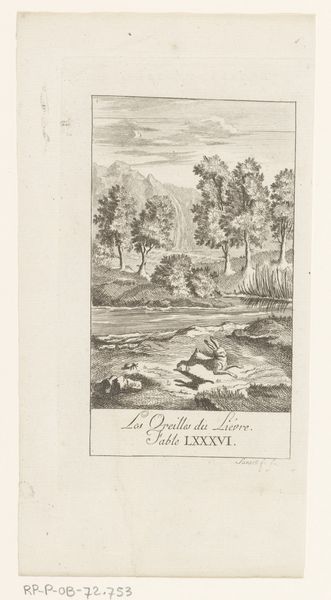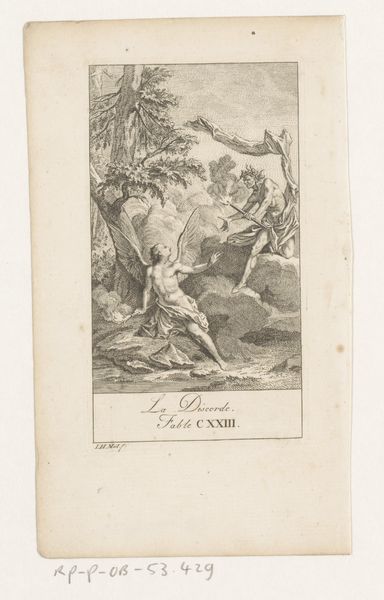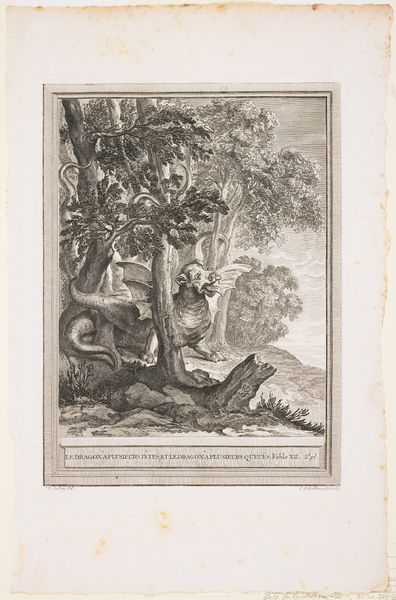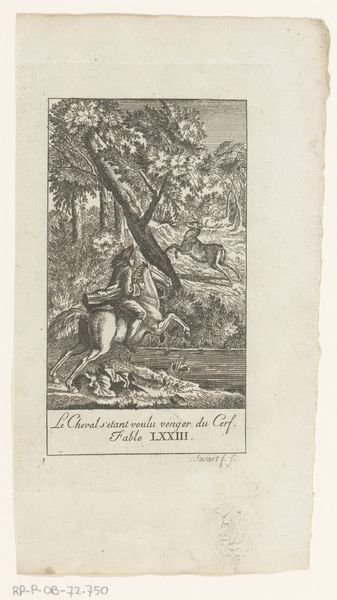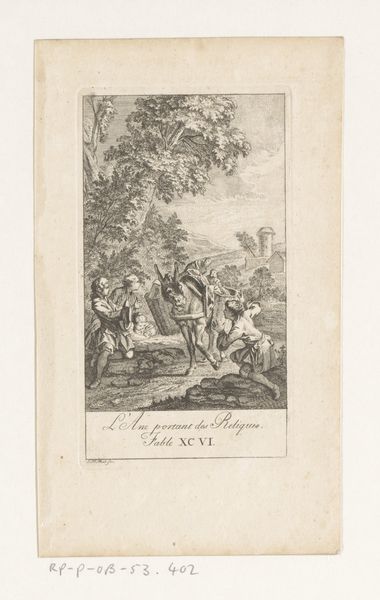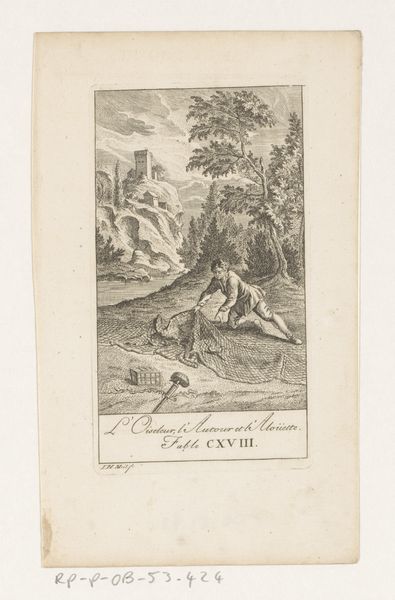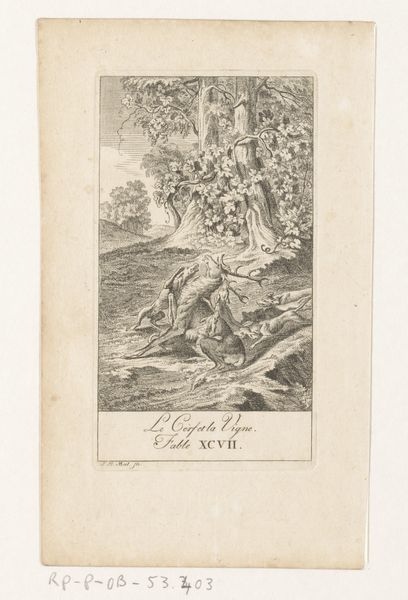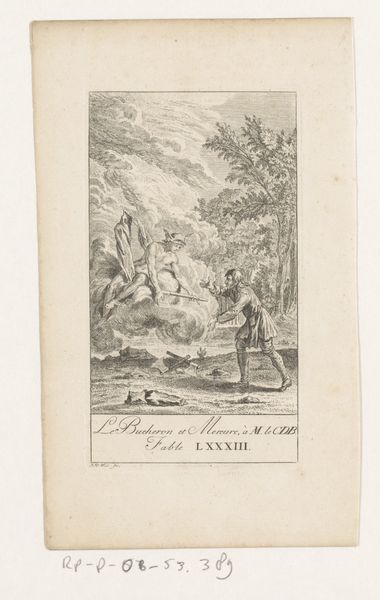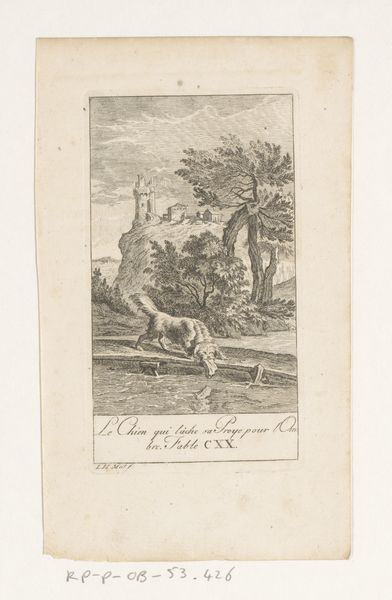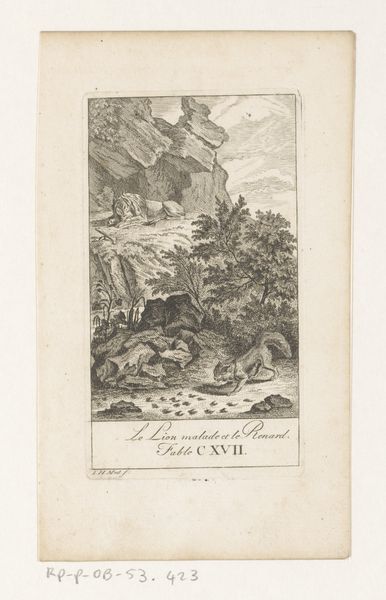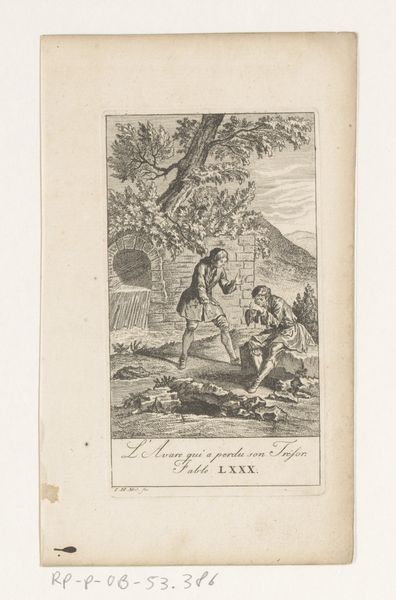
print, engraving
#
narrative-art
#
baroque
# print
#
old engraving style
#
landscape
#
figuration
#
engraving
Dimensions: height 142 mm, width 81 mm
Copyright: Rijks Museum: Open Domain
Curator: Johann Heinrich Meil the Elder created this engraving in 1758. It’s titled "Fabel van het paard dat zich wil wreken op het hert," or, in English, "Fable of the horse that wants to take revenge on the deer." Editor: It has an immediately unsettling feel to it. The image of the horse and rider leaping over what appears to be a stream… something about the stiff posture suggests unease, and there’s a rather sinister tone at play, right? Curator: Absolutely. Look at the title. It clues us into the political and social dynamic. A fable is often deployed as a mirror, reflecting societal ills under a deceptively simple guise. Who holds power, who seeks revenge, and against whom? It invites interrogation of these power dynamics. Editor: The image certainly resonates with familiar tropes of vengeance and the abuse of power. We’re so used to seeing the horse symbolize strength, power, loyalty—but here there’s a distinct break. Can you decode other aspects of the scene in this context? Curator: The visual elements become laden with potential allegorical weight. For example, the forest in the background isn’t merely landscape. What did the wilderness represent to Meil's contemporary audience? Was it chaos, or a natural space where societal conventions didn't hold the same sway? Consider also that while the horse enacts revenge upon the deer, it does so while subjugated under the rule of a human rider. Is freedom truly won when one form of domination is simply exchanged for another? Editor: Interesting point! This speaks to me of the cyclical nature of such acts of vengeance, where there's always another power at play. In terms of symbols, the deer is often seen to symbolize grace and gentleness. I can't help but feel a sense of loss in the narrative—innocence displaced or threatened. Curator: It seems the print manages to collapse innocence, complicity, and exploitation into one scene. By viewing such stories of past times we start reflecting how present these themes are nowadays as well. Editor: Absolutely! The engraving is like an entire system of meaning contained in an antique mirror, really—one reflecting issues as relevant today. Curator: I couldn't agree more, that's what I'm getting from looking at art through an activist lens. It helps contextualize the symbolism and find connections. Editor: This image stays with you long after you turn away from it.
Comments
No comments
Be the first to comment and join the conversation on the ultimate creative platform.
